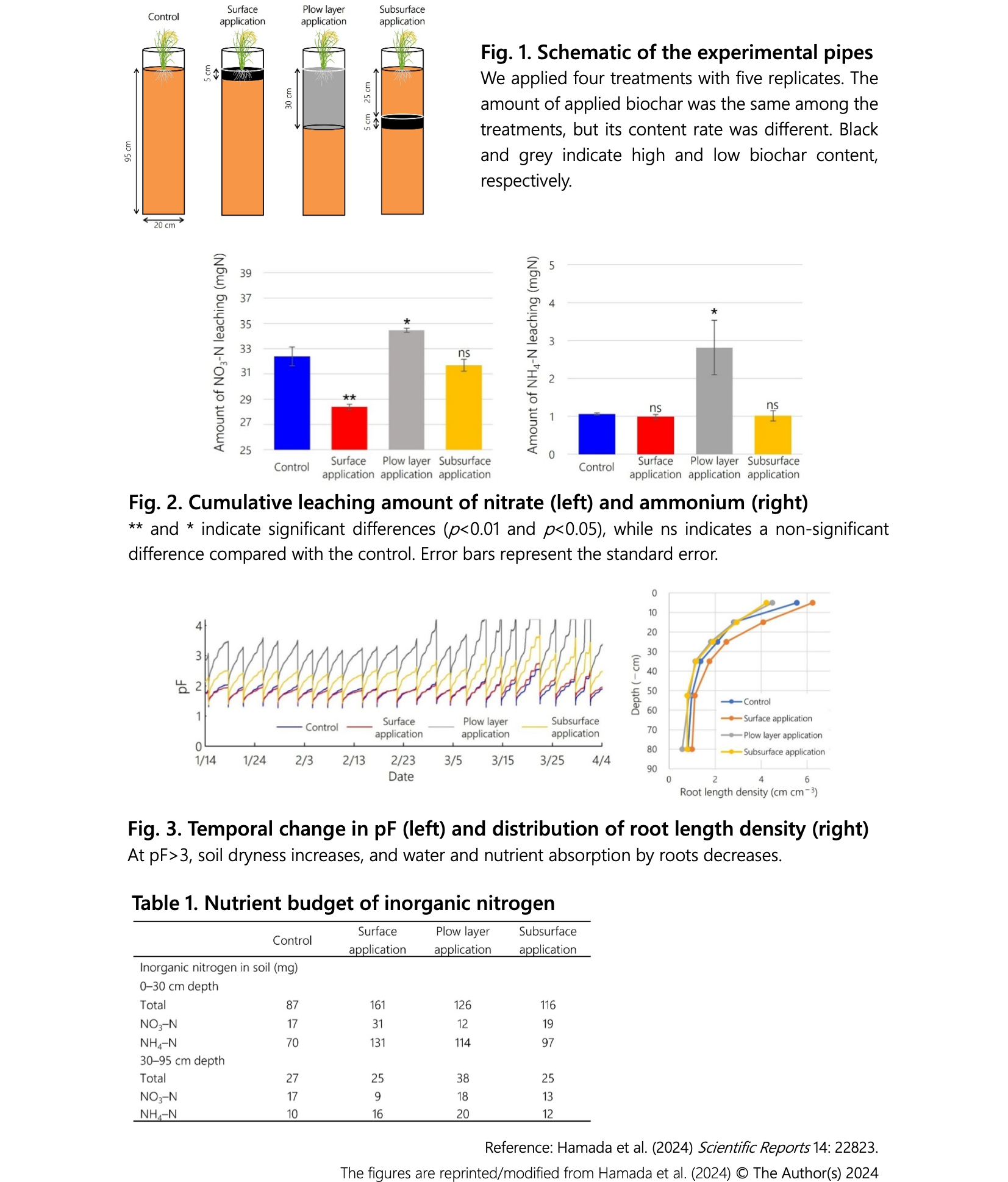Biochar application to soil surface layer effectively reduces nitrogen leaching under crop-present conditions
Description
The Haber–Bosch process enables humanity to produce nitrogen fertilizer, allowing the population to grow by increasing food production. However, nitrogen applied as fertilizer often leaches from farmland in nitrate form, moving into water bodies such as groundwater and rivers and polluting the surrounding environment. Therefore, mitigating nitrogen leaching is urgently required. Biochar has been applied to farmlands to mitigate leaching while storing carbon. The effect of biochar application differs depending on the application depth; however, the effect of the application depth has not been evaluated under crop-present conditions. This study aimed to evaluate the effects of different biochar application depths on nitrogen leaching under crop-present conditions.
We conducted a pipe experiment with a plant (NERICA4) using bagasse biochar (800°C) with four treatments (Fig. 1): no biochar application (control), surface application (0–5 cm), plow layer application (0–30 cm), and subsurface application (25–30 cm). The experiment was conducted in a glass room. The amount of applied biochar was the same among the treatments (10 t ha−1). Surface irrigation was conducted every two or three days, and powdered fertilizer was applied monthly. We measured the amount of nitrate and ammonium leaching during the experiment. Nitrate leaching was reduced by 12.3% by surface application (p<0.05), whereas nitrate and ammonium leaching were increased by 6.4% (p<0.05) and 164.1% (p<0.01) by plow layer application (Fig. 2). The subsurface application did not alter the leaching. We estimated the soil’s dry condition and found that it was weaker at a depth of 10 cm under surface application, whereas it was stronger under plow layer application (Fig. 3, left). The root length density was increased at all depths under surface application, while it was smaller at the soil surface layer under plow layer application compared to the control (Fig. 3, right). The estimated amount of adsorbed inorganic nitrogen indicated that 75% of nitrogen existed at depths of 0–30 cm under surface application, whereas more than half of it existed at depths of 30–95 cm under plow layer application (Table 1).
Our study indicated that surface application reduced nitrate leaching; the reduction in soil’s dry condition and the increase in adsorbed inorganic nitrogen might explain these differences. Choosing a proper biochar application depth could contribute to mitigating nitrate leaching and possibly reducing nitrogen fertilizer use. n fertilizer use.
Figure, table
- Term of research
-
FY2022
- Responsible researcher
-
Hamada Kosuke ( Tropical Agriculture Research Front )
ORCID ID0000-0003-4282-8677Nakamura Satoshi ( Crop, Livestock and Environment Division )
ORCID ID0000-0002-0952-5618KAKEN Researcher No.: 00749921Kuniyoshi Daichi ( Tropical Agriculture Research Front )
ORCID ID0009-0004-2303-7161KAKEN Researcher No.: 70912559 - ほか
- Publication, etc.
-
Hamada et al. (2024) Sci. Rep. 14: 22823.https://doi.org/10.1038/s41598-024-73621-3
- Japanese PDF
-
2024_A08_ja.pdf1.58 MB
- English PDF
-
2024_A08_en.pdf411.76 KB
* Affiliation at the time of implementation of the study.

